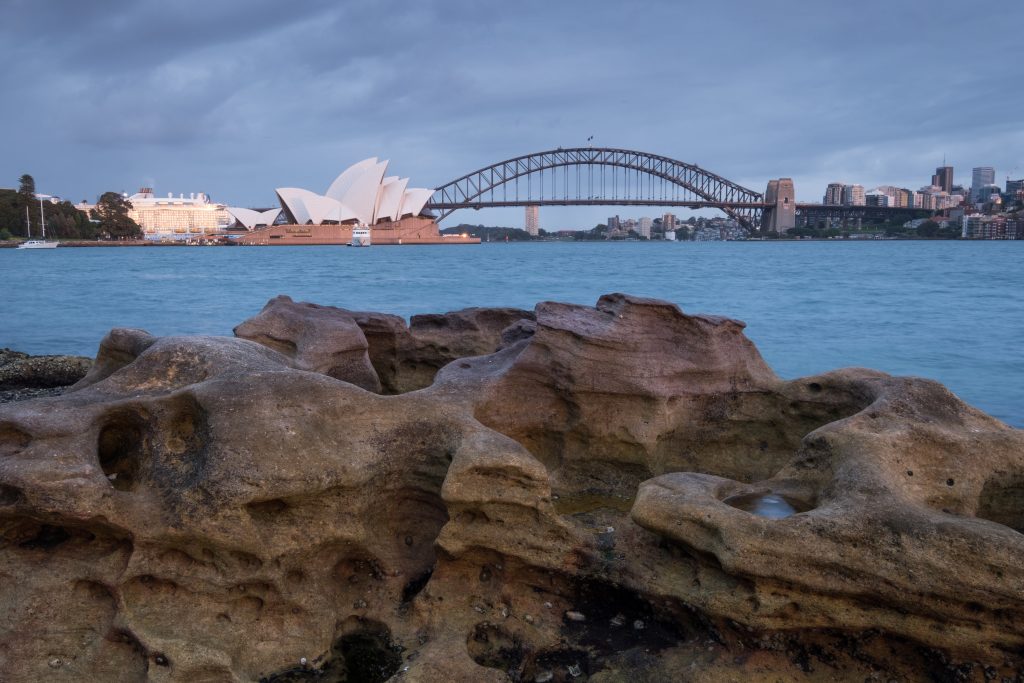
This is an excerpt from 50 Things Photographers Need To Know About Focus by John Greengo.
What’s in focus and what’s out of focus plays a huge role in any photograph. The human eye is naturally drawn to subjects that are sharp, so any element in focus will draw the attention of the viewer. Subjects or areas out of focus can serve as a background, foreground, or secondary element that can help set the scene for the more important subject. Obtaining the desired focus will require the proper choice of an aperture and its resulting depth of field. Controlling the depth of field is critical because it controls the story that is being told.
Depth with Aperture
The first of several elements for controlling depth of field is the aperture. The size and shape of the band of in-focus area will also depend on subject distance and lens choice. In every lens there is an aperture that can vary in size to control the amount of light entering the camera. The primary purpose of the aperture is for exposure control, but an important secondary result is its impact on depth of field.
When the aperture is set to a very open position (e.g., f/1.4, f/2, f/2.8) lots of light is let into the camera and the resulting image will have a shallow depth of field. Closing the aperture to a small setting (e.g., f/11, f/16, f/22) will diminish the amount of light let into the camera, but it will also result in greater depth of field. The narrow aperture results in more depth of field because light that is forced through the small opening results in objects being more in focus, even if the lens isn’t properly focused on the subject.
Depth with Proximity
The distance between your camera and your subject has a huge impact on how much of the photograph will be in focus. Subjects farther from the camera will have greater depth of field, and subjects closer to the camera will have narrower depth of field at a given aperture. This aspect of depth of field can be useful when you need to control the in-focus area but are limited by other choices you could make.

A shallow depth of field can isolate your subject from the background. ISO 100; 1/320 sec.; f/1.4; 50mm; Canon EOS 5D Mark III

A small aperture opening will allow you to keep elements in both the foreground and in the distance in sharp focus. ISO 100; 0.3 sec.; f/16; 16mm; Canon EOS 5D Mark III

Subjects that are close to the lens will have shallower depth of field than more distant objects. Even through f/8 was chosen for this image, the depth of field is extremely shallow. ISO 100; 2.5 sec.; f/8; 100mm; Canon EOS 5D
If you physically move in closer to your subject, the background blur will increase. Photographing a person from head to toe may result in a slightly blurred background. Without changing the aperture or lens and focal length, moving closer for a head-and-shoulders portrait will result in a much blurrier background. That out-of-focus background can serve as a clean backdrop for the sharp focus of your portrait subject.
Depth with Lens Choice
The focal length of your lens will also play a role in how much of your image will be in focus. Wide lenses have great depth of field and telephoto lenses have shallow depth of field. You can change the aperture to control the depth of field, but focal length is the prevailing factor that affects range of focus. The farther from a normal lens you’re using, the more extreme the impact will be.
With full-frame cameras, the 35mm lens is a modestly wide lens that tends to have a bit more depth of field than a 50mm lens. As one moves into even wider lenses (28mm, 24mm, 20mm, 15mm), the depth of field at any given aperture also increases. If you desire everything in an image to be rendered in focus, it will be easier to do it with a wider lens. One of the reasons that landscape photographers choose wide-angle lenses is for the deep depth of field that renders almost every element in focus.
On the flip side, telephoto lenses will help isolate a subject by blurring the background. Portrait and sports photographers generally need to capture a subject in sharp focus. To make the background less of a distraction, a telephoto lens is used to render it a blur. The longer the lens, the shallower the depth of field for a given aperture will be. Portrait photographers tend to use lenses in the 85mm to 135mm range because they give a nice blur to the background, they are reasonable in size, and they offer a comfortable working distance from the portrait subject. Sports photographers by necessity use longer lenses, in the 300mm to 600mm range, which can result in an extremely shallow depth of field. This is very helpful since they have little to no control over the choice of background at a sporting event.

Wide-angle lenses exhibit great depth of field even at modest aperture settings. ISO 200; 0.4 sec.; f/11; 19mm; Fujifilm X-T2
Background Focus
A lesser-known way to control the amount of focus on the background is by moving your subject away from it. When taking a photo of a person standing very close to a wall, the wall will be in the same depth-of-field range as the subject. The farther the subject is away from the wall, the more out of focus the wall will be. If you prefer your subject to be the in-focus star of the image, move the subject as far away from the background as possible.
Depth-of-Field Preview
Many cameras, both mirrorless and DSLR, may feature depth-of-field preview buttons so you can see what the resulting depth of field will be for a given aperture. All cameras default to opening the aperture of the lens to its widest setting when you are viewing and composing through the viewfinder. This is to let in the maximum amount of light, which makes viewing and focusing easier. As you adjust the aperture setting on your camera, the aperture won’t move into position until a moment before the photo is taken.
When you set an aperture of f/16, an aperture generally associated with great depth of field, you will not see this affected through the viewfinder. However, with a depth-of-field preview button (or this feature programed to a function button), you can view the scene with the aperture closed down to see the resulting depth of field. Check your camera’s manual to see if your camera has this capability.

Telephoto lenses exhibit a shallow depth of field, which can help to visually separate a subject from the background. ISO 400; 1/1000 sec.; f/5.6; 400mm; Sony ILCE-7RM3
This is an excerpt from 50 Things Photographers Need To Know About Focus by John Greengo.
